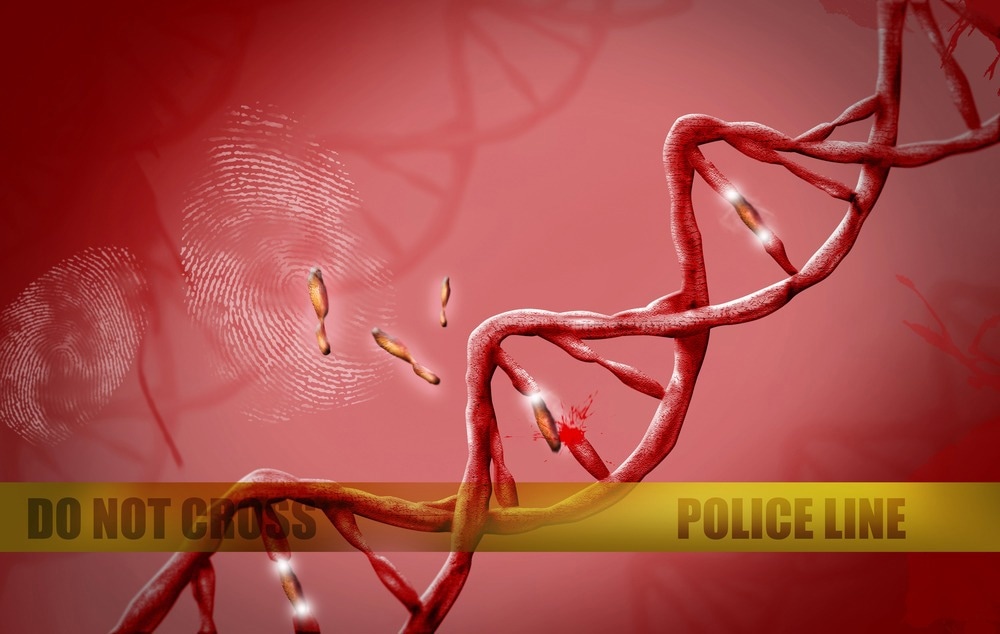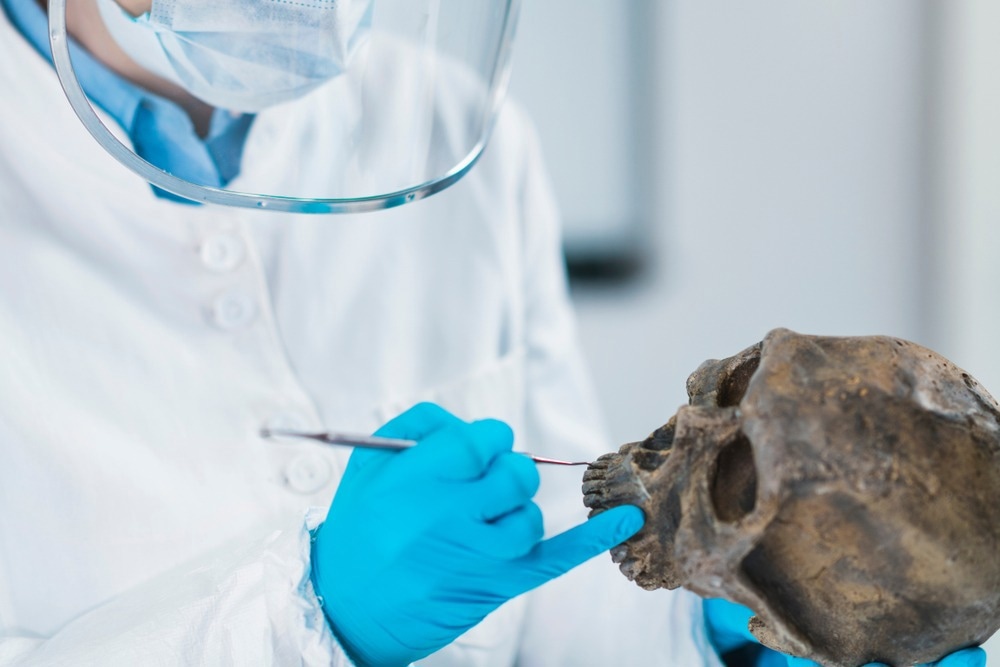Introduction of DNA in Forensics
DNA analysis techniques have progressed multiple times over the years as technology advances and facilitates more information with less (and even degraded) starting material. Nowadays, DNA analyses rely on the statistical computation of the rarity of the produced profile within a certain population. Forensic DNA profiling was first introduced in the mid-1980s under the term "DNA-Fingerprinting".
Fingerprints had long been accepted as the 'holy grail' of identification. Later, however, the comparison with fingerprints became a point of friction in the early 1990s during the "DNA wars" that occurred during that period. The reliability of DNA evidence was scrutinized. Specifically, questions were asked regarding the quality of the science and the statistical analyses upon which scientists could evaluate the significance of their findings and assign probabilities to their results.

Image Credit: Crystal Eye Studio/Shutterstock.com
Early Struggles and Final Acceptance
DNA profiling/fingerprinting was initially seen as weak evidence since there was a level of subjective scientific interpretation within it; the reports generated from DNA analyses were a measure of statistical probability. As DNA profiling techniques became more refined in the late 1990s and legal admissibility became the new normality, the scrutiny of legal advocates turned instead to fingerprints.
With almost identical arguments that formed the basis of challenges during the early stages of 'DNA profiling,' fingerprint evidence has been challenged and excluded from some courts. The public and scientists began to look to the forensic DNA sciences as a reference by which fingerprints should be gauged. This radical change of perception where DNA profiling has become the gold standard in place of fingerprints paints a very accurate picture of the remarkable evolution of forensic DNA profiling.
The forensic biology field has benefited from the research emphasis placed on the elucidation of human genetics. This pursuit initially resulted in a range of technological enhancements that led to faster processing of genetic samples. Since then, the research into human DNA's physical and genetic properties has increased, and new opportunities for DNA analyses on different samples have been explored, yielding favorable results in many cases.
Saliva and its DNA Analysis Evolution
Bodily fluids are often found at crime scenes and can be analyzed to obtain DNA evidence. Saliva may be available from a variety of evidence, like bitemarks, drinking glasses, tissues, etc. The main source of DNA from saliva evidence is the desquamated epithelial cell at the oral mucosa. Saliva can be collected using swabs, oral rinses, cytobrushes, or even vials.
Genetic analysis of saliva is performed using a variety of protocols. Hybridization used to be the method of choice, but nowadays, PCR-based, SNP genotyping, sequencing-based, and DNA micro-array techniques are the usual choices. Specifically, the major analysis techniques include spectrophotometry, microsatellite markers, genotyping with different loci, Single nucleotide polymorphism, Short Tandem Repeat, Variable Number Tandem Repeat (VNTR), High-resolution melting, Amplified Fragment Length Polymorphism, and gene sequencing.
PCR and other genotyping methods seem sensitive and specific, with a high success rate compared to spectrophotometry. Spectrophotometry relies on Optical Density to analyze DNA and cannot accurately distinguish human and non-human DNA, and its results are not comparable to PCR. The use of multiplex analysis (for example, panels of multiple gene loci) is reported to present higher success rates compared to single locus analysis. This new generation of techniques is faster, easier to perform, and incurs lower costs. However, certain issues need to be addressed, such as establishing specific protocols for the discovery and preparation of saliva for genetic analysis.
One of the most accepted and reliable methods for sampling saliva for DNA analysis is collecting whole saliva in a stabilization medium and storing it at either room temperature or cryostorage. Oragene seems to be the preferred method for saliva collection, as seen in scientific literature. In this method, whole saliva is placed in a kit containing a medium that destroys microbes and stabilizes human DNA, thus significantly increasing success rates.

Image Credit: Microgen/Shutterstock.com
Forensic Relevance of Ancient DNA of Bones and Moving Forward
Ancient DNA is present in relatively low quantities, at least when compared to modern DNA samples. Therefore, it is of the utmost importance that every step in obtaining and processing DNA from a sample is optimized to maximize DNA yield and minimize any unavoidable DNA loss. This endeavor starts with the choice of sample and carries on with DNA extraction, PCR or construction of Massively Parallel Sequencing (MPS) libraries, or even hybridization capture and sequencing, and finally, bioinformatic analyses.
Throughout this process, a secondary characteristic of ancient DNA has to be kept in mind, which is its short fragment length. Although this is common knowledge, ancient DNA extraction methods have focused on fragments below 50 bp, which form most of these molecules.
Ranging from DNA extraction to bioinformatic analyses, the methodologies used in ancient DNA research must be optimized for the small amounts of DNA present and their short fragments. Their extended postmortem interval poses another problem: the presence of inhibitors, such as humic acids, that can be a hurdle when it comes to enzymatic reactions used in the processing steps. Therefore, ancient DNA extraction methods must be tailored to optimize DNA yield while simultaneously minimizing the coextraction of inhibitors. This type of DNA often contains additional DNA damage that prevents enzymatic manipulation, namely abasic sites and blocking lesions.
Interestingly, very little is known about the types and frequencies of these lesions, but the few studies performed suggest that they may be common in at least some samples. Another issue with ancient DNA is that it may contain miscoding lesions in the form of deaminated cytosines, leading to C to T substitutions.
The take-home point from the ancient DNA community that embraced the possibilities of MPS technologies is that the forensic DNA community should consider adopting this type of technology, as it has been proven that this is the step forward in DNA analyses.
Continue Reading: The Role of DNA in Forensics
Sources:
- Michael Hofreiter et al. (2021) Progress in forensic bone DNA analysis: Lessons learned from ancient DNA Forensic Science International: Genetics 54 102538 https://doi.org/10.1016/j.fsigen.2021.102538
- G. Sujatha et al. (2019) Determination of reliability and practicality of saliva as a genetic source in forensic investigation by analyzing DNA yield and success rates: A systematic review https://doi.org/10.1016/j.ajoms.2018.12.004
- Runa Daniel & Simon J. Walsh (2009) The Continuing Evolution of Forensic DNA Profiling- From STRS to SNPS Australian Journal of Forensic Sciences, 38(2), pp.59-74 https://doi.org/10.1080/00450610609410633
Further Reading
Last Updated: Jan 24, 2023